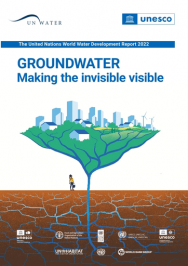From 1 April to 22 September 2022, visitors to the Défense in Paris, France, can experience an exhibition that is an ode to the beauty and the fragility of freshwater and those who depend upon it. Franco-Brazilian artist Sebastião Salgado has chosen citations from literature to accompany his stunning black and white photos. He cites the French writer Bernard Clavel, for instance, who wrote, « Homme, n’oublie jamais qu’un fleuve est une vie ! » (Never forget that a river is a life).
Sebastião Salgado’s photos take the visitor on a breathtaking and often moving world tour of water. The scenes depicted range from a glacier in Patagonia to women fishing for shrimp in Indonesia (pictured) and zebras drinking from a watering hole in Namibia.
The exhibition has been organized by the Fonds de Dotation Contemplation, a French non-governmental organization, with partners that include UNESCO. ‘The organizers of the exhibition approached us’, explains UNESCO programme specialist Alice Aureli, because ‘UNESCO was responsible for this year’s celebration of World Water Day, on 22 March’, the theme of which is groundwater. The Director-General of UNESCO, Audrey Azoulay, launched this year’s World Water Development Report: Groundwater: Making the Invisible Visible, on behalf of UN-Water at the World Water Forum in Dakar, Senegal, on 21 March. She also led a UNESCO delegation to the exhibition opening in Paris on 31 March.
An exhibition panel provided by UNESCO’s Intergovernmental Hydrological Programme explains why groundwater is so important. ‘The largest reserves of freshwater in its liquid form on the planet are underground’, it states. ‘Half of the world’s population depends on it for their supply of drinking water. These reserves also provide much of the water used for food production and industrial processes. Groundwater is also essential for the proper functioning of ecosystems, including wetlands and rivers. While in the most arid areas of the planet, groundwater is sometimes the only available water source. Finally, groundwater can play an important role in adapting to climate change’.

Another exhibition panel provided by UNESCO recalls that water is an ‘essential resource, without which we could not survive’ but that water is also ‘threatened in the long term by waste, pollution and the impact of climate change. It is therefore necessary for each and every one of us to act by whatever means possible to protect it’, states the panel.
To reinforce its ecological message, the exhibition is housed in a temporary pavilion made of bamboo that has been designed by Colombian architect Simón Vélez.
Mr Salgado has partnered with UNESCO before. In one project, he arranged for 3 million trees to be planted in the Mata Atlântica Biosphere Reserve in southern Brazil. The Atlantic rain forest covers around 90 000 km² and is a biodiversity hotspot. It is part of UNESCO’s network of 727 biosphere reserves in 131 countries, which covers more than 5% of the Earth’s land surface.
The exhibition may be visited from 10 am to 7 pm from Tuesday to Sunday until 22 September.



